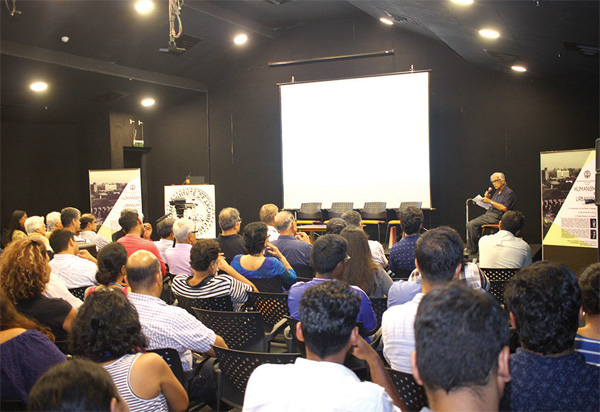Panjim is forgetting its past
The Indian Institute of Architects, Goa Chapter presented ‘Humanism in Urbanism – Goa and Beyond’, a fascinating conversation between architect Bruno Dias Souza and architect and urbanist Vinayak Bharne that brought forth various aspects of architectural design

Does a consumer interested in buying a house in Goa adjust to the parameters placed in front of him by builders who are driven by the market or look for a design that is sensitive to human scale and the human angle? Existing trends of having commercial establishments on the ground floor and balconies on the first floor have to be revisited. Questions have to be asked and continuously as Goa is on the cusp of momentous change as various factions look to transform the face of the state under the guise of development. It is important to incorporate sensitive human spaces in the design scale and retain humanism within. It is a question that has bedevilled architects and city planners all over the world. A fascinating conversation took place between architect Bruno Dias Souza and architect and urbanist VInayak Bharne in Panjim, wherein both men of considerable expertise presented their views in a cogent manner.
Bruno Dias Souza was educated at Columbia and Harvard in the
1950s and was a professor at the School of Planning and Architecture (SPA) and
a consulting architect in New Delhi until 1972, when he joined UNESCO and was
in charge of World Bank projects in Africa. For a man of such considerable
achievement and expertise, this public gathering, which afforded him an opportunity
to speak to an audience of fellow architects and planners, was a first in
twenty-seven years. Humanism, he said, was hard to define and as humans it was
inherent in everyone. Urbanism, he said, was not his area of expertise because
he was not an urban planner but an urban designer. This was peculiar in the
sense the designer also uses it. Urban design, he said, at the end of it all
was an experience. And it is importantly not deliberate as is the fashion now
where everything is about show. Labels like smart cities made no sense. The
design is for the people to move around and to solve the problem of interface
between man and machine. Humanism, he felt, should also be felt within a
building. The manner in which it was designed and allowed people to breathe
within was part of it all. Walls and barriers are an impediment to humanism.
Urban design is also about memories. Panjim, according to him, was forgetting
its past by trying to redesign open spaces. For him, Panjim was a space of
parks; people have to be able to move.
The second speaker, Vinayak Bharne, is the Principal and
Director of Design at Moule & Polyzoides Architects and Urbanists in Los
Angeles, one of the founding firms of the New Urbanism movement. He is also
Adjunct Associate Professor of Urbanism at the University of Southern
California, Expert Member at the Guangzhou Institute for Urban Innovation in
China, and Executive Editor of the Mumbai/Netherlands- based quarterly My
Liveable City. Featured as an emerging thought leader in World Architecture
News in 2013, he was one of nine international urbanist practitioners honoured
at the Urban Edge Award Seminar in Milwaukee, USA in 2015. As far as he was
concerned, he did not like to use the word urban design any more. Since it came
from a prominent institution like Harvard, it was all enveloping. He felt it
was up to the architect to interpret it the way they wanted it. He liked to
keep the word ‘urbanism’ open ended. It meant different things to different
people and not because their goals are different but the lenses through which
they look at it is very different. Urbanism should be a bridge to other
disciplines which should be allowed to colour the lens. It was about being
modest. Urbanism, he said, was all about politics, because designers and
architects are brought into the mix once a lot of decisions were already made.
Every practice of urbanism has been framed within political structures. In the
USA, for example, it is mandatory for every project to be open to a community
meeting where the project will be discussed and feedback incorporated.
Urbanism, he said, was not just design but it was about how one plugged into
the political system and the other eco systems and created something special.
Urbanism transcends architectural style. And yes it was also about compromises.
One had to use the developer lobby to create positive change because there were
a few very good conscious companies who would be willing to listen.
Vinayak
ended by saying architects had to learn to play the game and hold on to what
they had. The development in Goa was mirroring those of cities around the world
with a building in Panjim looking similar to one coming up in a village. It did
not make sense. People had to stop and think. Perhaps for the future of this
state, one should do just that.
- By Ajit John [email protected] | 03 Aug, 2017, 05:28AM